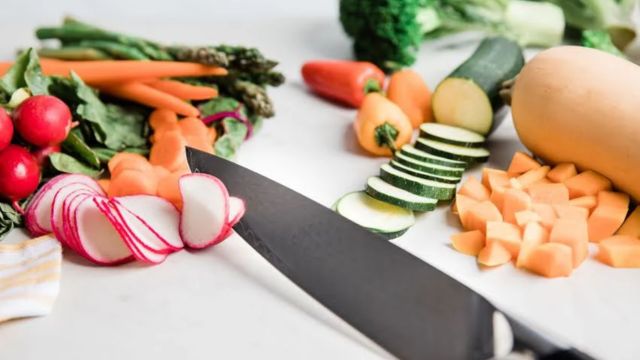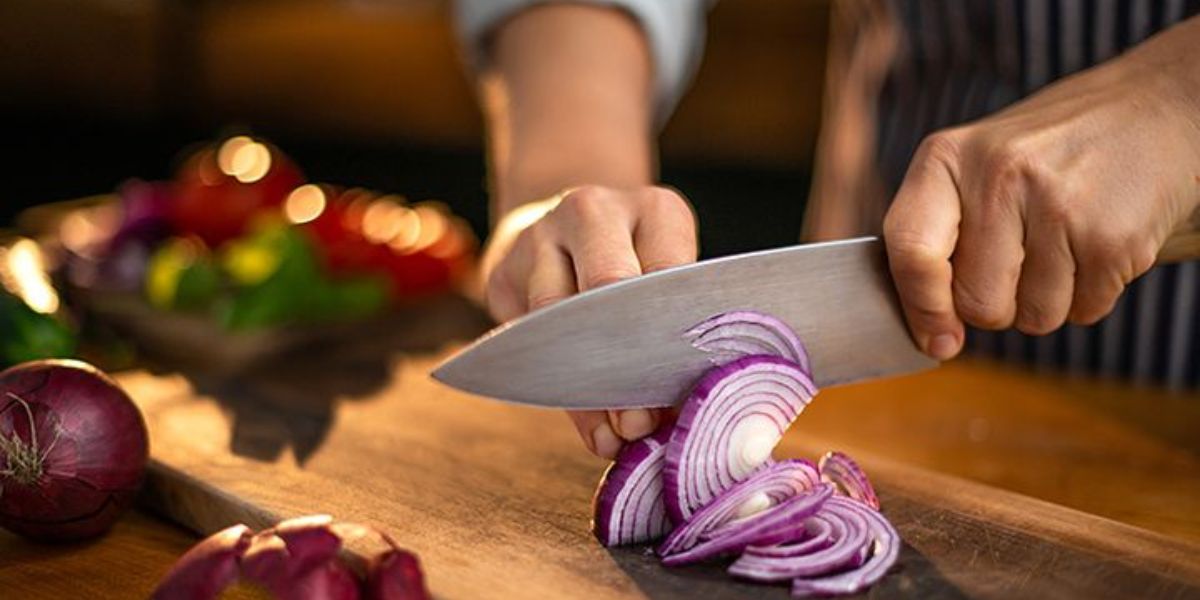MJP –
Cutting vegetables is a fundamental kitchen skill, but doing it safely and effectively can make a big difference in both your cooking and your safety.
Whether you’re a beginner or a seasoned chef, following these five rules will help ensure your vegetable prep is efficient and hazard-free.
1. Choose the Right Knife
Using the correct knife for the task is crucial. A sharp chef’s knife is ideal for most vegetable-cutting tasks, as its broad blade allows for clean cuts and better control.
For smaller vegetables or precise cuts, a paring knife might be more suitable. Make sure your knife is well-maintained and sharpened; a dull knife is more dangerous than a sharp one because it requires more force and can slip off the vegetable.
2. Use a Stable Cutting Surface
Always use a stable cutting board to prevent slipping and accidents. Ensure your cutting board is securely positioned on the counter. If it slides around, place a damp towel or a non-slip mat underneath it to keep it in place.
A wooden or plastic board is preferable; avoid using glass or marble as they can dull your knife quickly.
3. Employ the Claw Grip

The claw grip technique is essential for protecting your fingers. Curl your fingertips inward and use your knuckles as a guide for the knife.
SEE MORE –
New Rules Bell! Mexican Law on Found Treasure: What Happens If You Strike Gold?
This way, your fingers are safely tucked away from the blade. Keep your knuckles aligned with the knife’s edge, and move your hand back as you cut. This technique also helps in making uniform cuts.
4. Cut Vegetables Evenly
For consistent cooking, it’s important to cut vegetables into even pieces. Uneven cuts can result in some pieces being overcooked while others are undercooked.
Aim for uniform slices or chunks to ensure even cooking and a more visually appealing dish. Use a ruler or guide for precision if needed, especially for recipes that require specific sizes.
5. Pay Attention to Knife Technique
The way you handle the knife impacts both safety and efficiency. Use a rocking motion with the knife’s blade, keeping the tip on the cutting board and moving the handle up and down.
This method ensures clean cuts and reduces the risk of the knife slipping. Avoid using excessive force; let the sharpness of the knife do the work.
Conclusion
Mastering these basic rules for cutting vegetables will improve your efficiency and safety in the kitchen.
With the right knife, a stable cutting surface, proper hand techniques, and attention to even cutting, you can make vegetable prep a breeze and avoid common kitchen mishaps.
Happy chopping!




